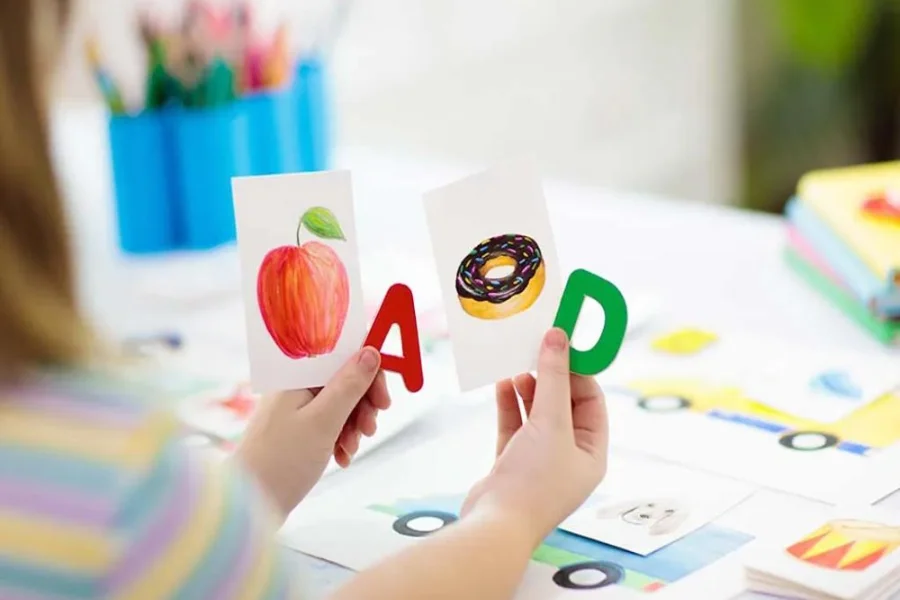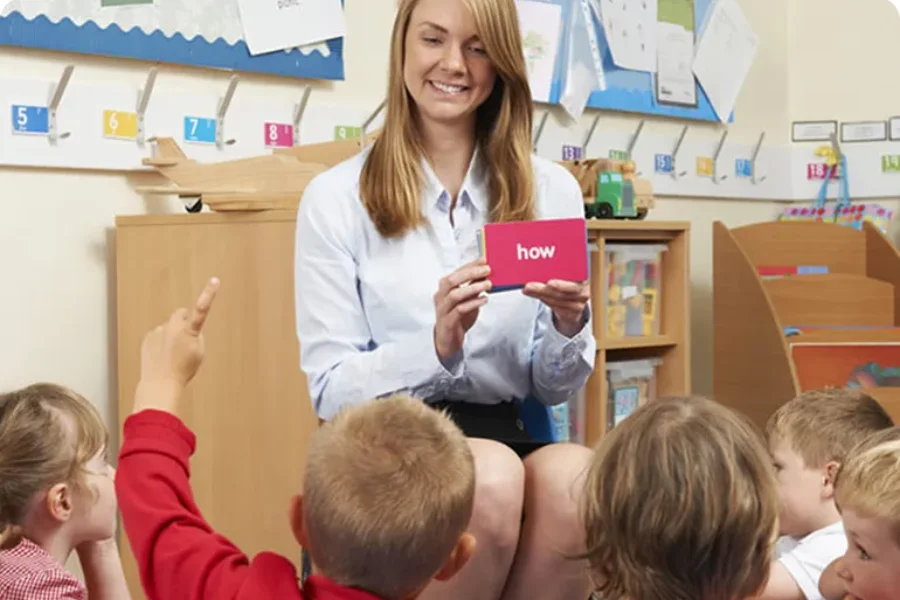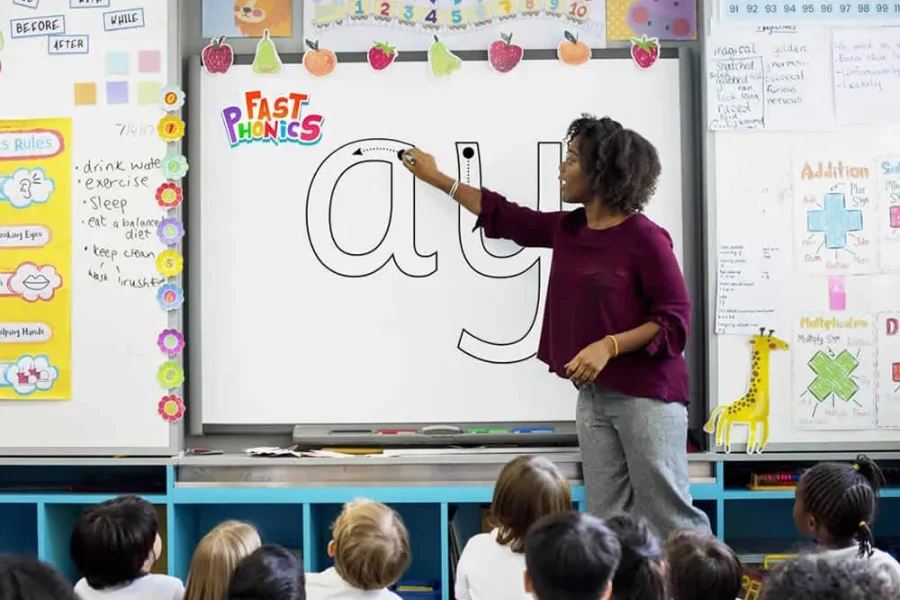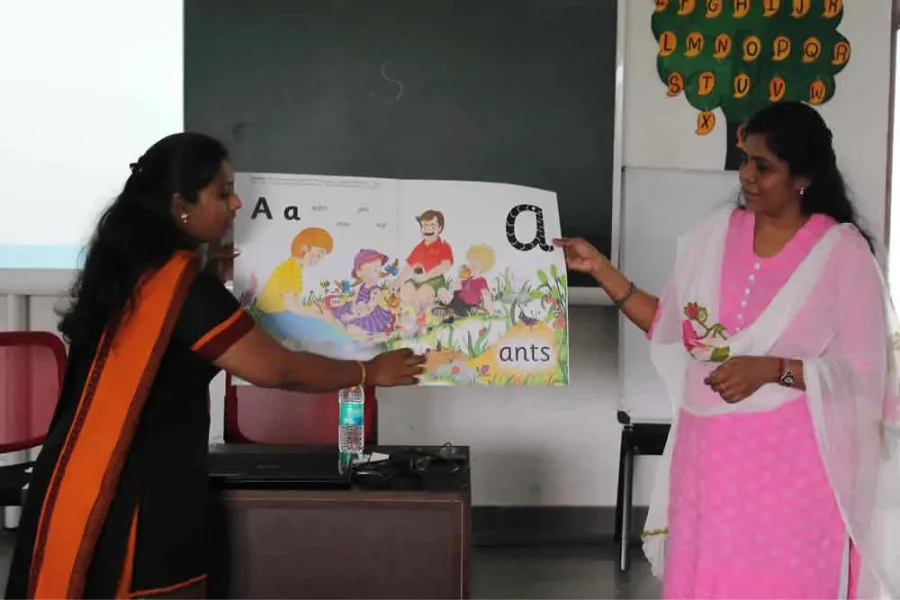How to Teach Phonics for Beginners?

Source: cdnparenting
How to Teach Phonics for Beginners?
Teaching Phonics for Beginners is a voyage filled with thrilling experiments and satisfying indicators. It is significant to flinch with the essentials, building a robust substance that will be supportive of a youngster’s reading and language capabilities.
In our guidelines, “How to Teach Phonics for Beginners,” we focus on effective methods and playful practices to acquaint young learners with the domain of phonics. From considering simple letter resonances to amalgamating these into words, we focus on equipping teachers and parents with the apparatuses they need to Teach Phonics for Beginners and to nurture a love for reading right from the start.
Table of Content
- Step 1: Teach the Common Letter Sounds.
- Step 2: Teach Blending and Segmenting Simple 2 and 3 Letter Words.
- Step 3: Making children read sentences made of 2 and 3 letter words.
- Step 4: Teach the diagraph Sounds.
- Step 5: Teach Blending and Segmenting of simple 4 to 5 Letter Words.
- Step 6: Making children read sentences made of 4 and 5 Letter words.
- Step 7: Blending and Segmenting of Words using Simple Digraphs.
- Step 8: Teach Phonic Rules
- Step 9: Teach Alternative Spellings for Letter sounds
- Step 10: Blending and Segmenting More Complex Words.
- Step 11: Teach Tricky words / sight words
- Step 12: Teach Trigraphs.
- Step 13: Making children read more complex sentences and passages
- Phonics Training for Teachers

Source: homespage
Step 1: Teach the Common Letter Sounds.
This step includes presenting learners with the initial sounds that every letter of the alphabet creates. For instance, ‘A’ creates the /a/ sound such as in ‘apple,’ ‘B’ creates the /b/ sound as in ‘ball.’ This opening knowledge is critical for knowledge of reading and spelling. Teach the Common Letter Sounds using attractive means like phonics melodies, flashcards, or collaborating games to make the learning procedure pleasant and unforgettable.
Step 2: Teach Blending and Segmenting Simple 2 and 3 Letter Words.
Offspring cram to amalgamate sounds to form words and break verses into separate sounds. For example, amalgamating /c/ /a/ /t/ to make ‘cat’ or segmenting ‘dog’ into /d/ /o/ /g/. It is important to Teach Blending and Segmenting Simple 2 and 3 Letter Words for reading and spelling. Simple words (CVC words) like ‘cat,’ ‘dog,’ or ‘sun’ are recycled. Happenings may contain using letter thatches to form words or using fingers to rap out all sounds.
Step 3: Making children read sentences made of 2 and 3 letter words.
Kids practice reading short sentences composed of simple words they have learned. For example, “A cat sat on a mat” uses 2 and 3 letter words. Making children read sentences made of 2 and 3 letter words boosts their confidence in reading and reinforces blending and segmenting skills. It often involves reading practice with books or worksheets that contain these short, simple sentences.
Step 4: Teach the diagraph Sounds.
Two letters that make a single sound, like ‘ch’ in ‘chip,’ ‘th’ in ‘this,’ and ‘wh’ in ‘what,’ ‘sh’ in ‘shop,’ are called Digraphs. Educating learners about digraphs includes showing offspring how these letter groupings create exclusive sounds. Teach the diagraph Sounds to expand their ability to decode more complex words.
Step 5: Teach Blending and Segmenting of simple 4 to 5 Letter Words.
Teach Blending and Segmenting of simple 4 to 5 Letter Words. The verses are still simple but need the kid to accomplish additional sounds, improving their phonemic responsiveness and reading services.
Step 6: Making children read sentences made of 4 and 5 Letter words.
Children are now introduced to sentences with slightly longer words, like “The frog jumps.” Making children read sentences made of 4 and 5 Letter words challenges them to apply their blending and segmenting skills to more complex words within the context of reading.

Source: assets
Step 7: Blending and Segmenting of Words using Simple Digraphs.
Now, offspring use their information of digraphs to balance and fragment words comprising these sounds. For instance, joining together /s/ /h/ /i/ /p/ for ‘ship’ or fragmenting ‘chat’ into /ch/ /a/ /t/. Blending and Segmenting of Words using Simple Digraphs improves their capability to decipher words and understand the connection between letter groupings and sounds.
Step 8: Teach Phonic Rules
Teach Phonic Rules, like the magic ‘e’ (making the vowel say its name as in ‘cake’) or double consonants (as in ‘grass’). These rules help children understand the language pattern, making it easier to decode unfamiliar words.
Step 9: Teach Alternative Spellings for Letter sounds
Teach Alternative Spellings for Letter sounds and present the perception that a solitary sound can be meant in various ways. For instance, the /f/ sound can be meant as ‘f’ in ‘fish,’ ‘ph’ in ‘phone,’ and ‘gh’ in ‘enough.’ Understanding these variations is key to advanced reading and spelling.
Step 10: Blending and Segmenting More Complex Words.
Children now work with more complex words that might include multiple syllables, digraphs, and different phonetic rules. For instance, blending and segmenting a word like ‘stretching’ or ‘happiness.’ Blending and Segmenting More Complex Words enhances their reading and spelling proficiency.
Step 11: Teach Tricky words / sight words
Teach Tricky words / sight words that don’t follow regular phonetic rules, like ‘the,’ ‘said,’ or ‘were.’ These words are memorized as a whole since phonetic strategies don’t apply. This is important for reading fluency.
Step 12: Teach Trigraphs.
Trigraphs are three alphabets that unruffled make a single sound, like ‘igh’ in ‘night’ or ‘tch’ in ‘watch.’ Teach Trigraphs to help kids identify and articulate these letter mixtures.
Step 13: Making children read more complex sentences and passages
Finally, children read longer and more complex sentences. Making children read more complex sentences and passages involves comprehensive reading, understanding context, and inferring meaning, thus combining all the phonics skills learned in the previous steps.

Source: phonicshero
Phonics Training for Teachers
There is great significance of Phonics in the early years of children in this contemporary educational world. It is a foundational skill that helps children to develop reading and writing understanding. Acknowledging this, Vidhyanidhi Education Society (VES) has meticulously crafted Phonics Training for Teachers- a transformative program for aspiring and current Phonics educators.
The Essence of Phonics Training for Teachers
Vidhyanidhi Education Society’s Phonics Training for Teachers focuses on excellence and comprehensive understanding. It equips trainees with the necessary skills and knowledge to become proficient educators to Teach Phonics for Beginners. It is an 18-hour training covering all the needs of diverse learners.
Highlights of the Phonics Teacher Training Program:
Intensive Training Duration
VES provides intensive Phonics training, ensuring participants acquire all the basics of Phonics for Beginners. The 18 hours of course duration ensures complete understanding within manageable learning timeframes.
UK-based Synthetic Phonics Teaching Methodology
The Phonics Training for Teachers at VES follows the UK-based Synthetic Phonics Teaching and Learning Approach. It is a globally recognized method, effective in teaching phonics, and offers best practices in teaching Phonics for Beginners.
Engaging Teaching Methods
VES incorporates audio-visual teaching aids to make learning engaging and more effective. It enhances the understanding and helps better retention of phonics concepts, thus helpful for Phonics for Beginners.
Creative Learning Techniques
The program includes the demonstration of sounds with jingles, stories, and actions. These creative learning techniques help better retention of phonics principles and make learning fun.
Comprehensive Coverage of Sounds
Trainees at VES undergo thorough practice of all 42 sounds (letter sounds and digraphs). This comprehensive coverage of sounds ensures all trainees are well-equipped to teach every aspect of phonics.
Practical Sessions and Mock Drills
VES provides hands-on experience to teach phonics to all its trainees through practical sessions and mock drills. These vital drills are helpful to teach Phonics for Beginners.
Supportive Learning Environment
The course offers doubt-solving and question-answer sessions, fostering an environment of support and continuous learning. It helps in clarifying concepts and supports individual learning needs.
Vidhyanidhi Education Society’s Phonics Training for Teachers is an investment for your bright future in the education world. VES enables teachers to bring a developmental change in the learning environment by focusing on “How to Teach Phonics for Beginners?” And empowers them to create literate and enlightened future leaders.
Phonics for Beginners
This Phonics Training for Teachers provides a great platform for educators aspiring to contribute significantly in the early stages of a child’s educational journey. This course equips the opportunity to be part of a transformative educational movement to understand “How to Teach Phonics for Beginners?” and shape the future of young minds!
FAQ
What is the best way to teach phonics?
Using interactive, multisensory techniques learned in the Phonics Teacher Training Course at VES is the best way to teach phonics.
How do you teach phonics in nursery?
Teach phonics in the nursery by introducing sounds and simple words with jingles, narratives, and engaging games.
What are the basics of phonics?
The basics of phonics comprise letter sounds, blending sounds to form words, and recognizing sound patterns.




